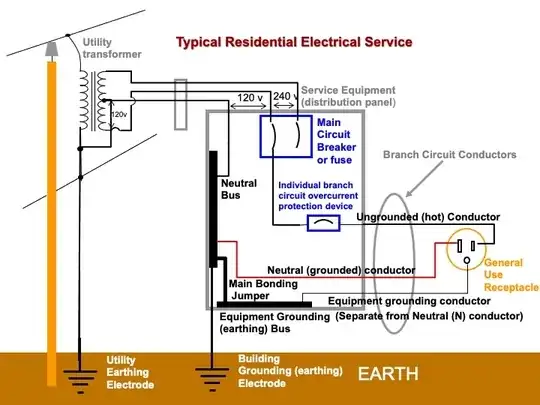ASSUMING it is properly connected (no faults and bonded to ground at
mains) why is it I don't get a shock? And more-over to my
understanding of AC power, how is the ground cable then not carrying
at least some current?
By bonding the neutral conductor to ground at the service panel, the neutral conductor is close to ground potential. I say "close" because, unlike the equipment grounding conductor (safety ground) which does not carry normal load current (only fault current), the neutral does. Therefore there will be a voltage drop along the neutral equal to the load current times the ohmic resistance of the neutral wire.
If everything is working properly, the neutral voltage to ground should be below the level that involves a risk of electric shock. I emphasize properly working, because if there is an open circuit or high resistance connection along the neutral conductor, the voltage may equal or approach line voltage posing a risk of electric shock hazard.
Bottom line: To avoid a risk of electric shock, never purposely touch the neutral conductor or stick something into the wide (neutral) slot of the receptacle.
Actually this makes sense! So just to be clear, both the ground wire
and neutral wire under my conditions would be carrying some voltage,
but not enough to shock correct? By ground I mean the Earth grounding
rod outside your house because that is connected from neutral bonding
to ground so if I understand correctly that would be a complete
circuit if I were to touch the outside rod
The equipment grounding conductor normally carries no current and therefore no voltage. The grounded circuit conductor (neutral) carries load current and therefore carries a voltage equal to that current times the resistance of the conductor. But that voltage is normally too low to pose a risk of electric shock.
I think it is important to understand the meaning of the term "grounded" in connection with to these conductors. The schematic below may help in that regard.
The following terminology is used in the US National Electrical Code (NEC)(NFPA 70) for the three branch circuit conductors of a nominal 120 vac circuit are
Ungrounded circuit conductor (a.k.a the "hot" or "live" conductor)
Grounded circuit conductor (a.k.a, the "neutral" conductor)
Equipment grounding conductor (a.k.a, the "safety ground")
These are the three conductors circled in the schematic for a single branch circuit.
The first thing to realize is that the equipment grounding conductor normally carries no current. It only carries current under fault conditions. That means the grounding pin on the receptacle shown has no voltage with respect to ground. If a fault occurs (e.g., failure of insulation between the "hot" conductor and ground) the branch circuit overcurrent device (or a GFCI if provided) is intended to clear the fault limiting the duration of the fault voltage, reducing the risk of electric shock.
The neutral conductor carries load current back to the neutral bus on the service panel. That bus is bonded to the equipment grounding bus as well as to the building grounding electrode. The load current between the neutral connection at the receptacle and neutral bus, the path shown in red, causes a voltage drop. The resistance of 100 feet of 14 AWG copper wire is about 0.25 Ohms. Multiplied by the max load current of 15 amps gives a voltage drop of only 3.75 volts.
However, the diagram shows only a single receptacle on the branch circuit, which is called a dedicated branch circuit. General 15 amp branch circuits however have multiple receptacles. Each receptacle involves connections and the possibility of a loose or open connection. If there was an open connection the voltage on the neutral downstream will rise to line voltage posing a risk of electric shock. This is what I meant when I said the neutral to ground should be below the level that involves risk of shock, provided that everything is working properly.
Hope this helps.

